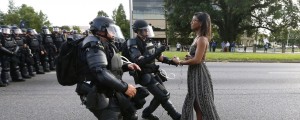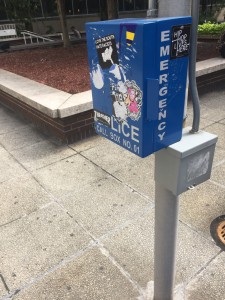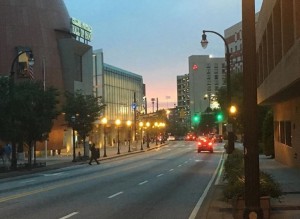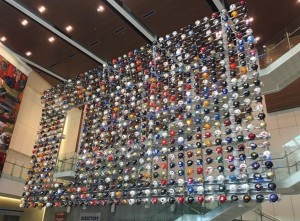Sarah Schindler wrote an article in the Yale law journal that gives an in depth look into physical segregation used by architects to subliminally (or not) segregate richer white communities from the poorer minority groups. In section (1A) Sarah opens up with an intriguing statement that states ” one might think it a simple aesthetic design decision to create a park bench that is divided into three individual seats with armrests separating those seats. Yet the bench may have been created this way to prevent people—often homeless people—from lying down and taking naps.” We might not look at a bench design as a way to keep the homeless away but it is a form of physical discrimination. Strongly suggested in this article is that politics usually have a hand in this construction of segregation. The segregation by physical design is used to cage people in and guide peoples behavior without them really even noticing . An example of this is used in section (1A)”That a highway divides two neighborhoods limits the extent to which the neighborhoods integrate. That a town has a square, easily accessible with a diversity of shops, increases the integration of residents in that town.” If one side of a town can’t access the luxuries as the other side, This will create a natural social difference between the two sides. For example the side of the city that can’t go shopping or have access to nice things might find things that are troublesome as “fun hobbies” This would create a whole new stand point on what was the “norm” and what wasn’t in a society.
A slight transition to section (1B) shows that the agenda for keeping minorities out of certain areas also came down to the market in which the houses were sold from. In section (1B) “Fischel’s Homevoter Hypothesis—suggesting that homeowners are more likely than renters to vote and more likely to vote in ways that will protect their property investment—and our country’s long history of intentional discrimination and exclusion.” In this case a majority of minorities rent so they would not consider living in these neighborhoods without even thinking that this is a strategic way to keep people segregated.
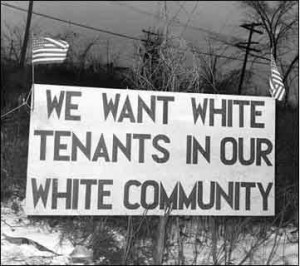
It is very hard to control this in the court of law. Officials know that this social injustice occurs, But they do not see it as a big enough problem to put regulations in force. This seems to be a big issue that law makers and legislators should take more seriously. Turning the other cheek will not make the problem go away. The author feels the same way (1B)(“Exclusion through architecture should be subject to scrutiny that is equal to that afforded to other methods of exclusion by law.”)
Part two talks bout the blatant segregation of communities to make it hard for lower income people to grow. Moses was an architect that was a prime example of this segregation and oppression . He would build bridges to low for busses to travel under the bridges to get into the higher income communities. This will discourage people of lower income to not want to come to the rich communities and go back to their neighborhoods where they belong according to architectural Norms. The author really catches emotions when she uses pathos in her argument when she describes a women whose bus could not reach her job at the mall so she had to cross several lanes just to get to the other side and were hit and killed. All of this could have been avoided if legislators didn’t turn the cheek and addressed this issue that needs to be brought to the light that has been in the dark for so long.
sites used for pictures :http://site-furnishings.columbia-cascade.com/columbia/Files/Images/Products/BaseProducts/profile-bench.jpg
https://www.pinterest.com/pin/227924431114734745/
MLA : Schindler, Sarah. “Architectural Exclusion: Discrimination and Segregation Through Physical Design of the Built Environment.” Yale Law Journal –. The Yale Journal, Apr.-May 2015. Web. 15 Sept. 2016
